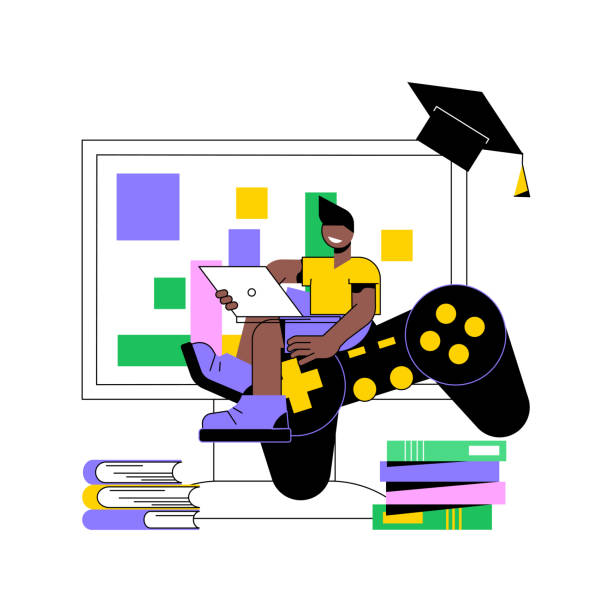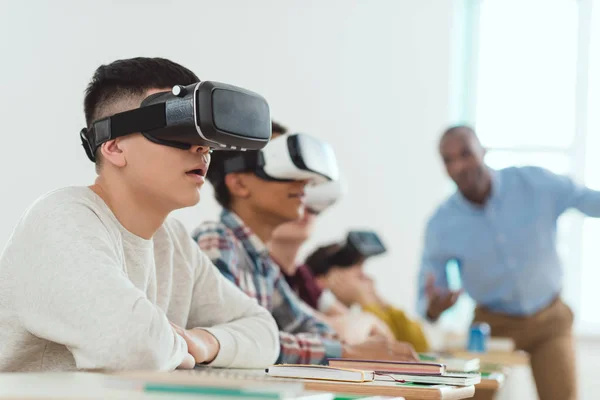Technological advancement in the last 15 years greatly impacted current society, revolutionising education and training. AR and VR in education where the students and teachers can study, work and gain knowledge in unexpected ways with the help of the internet and computers.
Across the world, educational institutions are changing their traditional teaching methods. However, redefining the role of virtual and augmented reality is the core pathbreaker in the education industry. AR and VR in education technology cover a huge spectrum. AR and VR in education are not limited to any fixed age group. Every age group can take its facilities.
Experiential learning is the most effective learning method. AR and VR in education promote excellent learning experiences by providing developing and engaging learning experiences to schools that are to be managed across the classroom.
So, it’s clear that AR and VR are redefining the education landscape. Now, let’s see how they differ from each other.
What is AR and VR: The Definition
AR stands for Augmented Reality, while VR stands for Virtual Reality. Both AR and VR in education contain exciting potential in the future in gaming, E-commerce, marketing and many other fields. Both technologies are enriched with experiences that assemble real and virtual worlds with enhanced 3-D visuals. However, though it sounds like they are a mix-up of two, there are still small differences.
Impact of AR on Education In India

Augmented reality in education captures nature and portrays its movements and data, adding more to the truth. One of the advantages of augmented reality is it does not need any display gadgets. This advantage of AR has made it the standard favourite in the recent revolution of technology. Thus, the use of AR in the education sector is to improve the learning environment by gaining the students’ engagement and experience.
Examples of Augmented Reality in Education
A number of industries, such as technology and Science, engineering, automotive, manufacturing, medical, healthcare, education and space exploration, use AR. Their purposes are to reduce training efforts and costs and to save productivity. Anyways, let’s see how augmented reality is used in the educational industry.
- AR virtual trips to historic monuments help students experience History excellently.
- Teachers teach the molecular structure and complex chemical compounds effortlessly with the help of AR videos and animation.
- Mentors explain Geometric lessons well with the help of AR to examine and manipulate 3D geometric shapes.
- As presentation is one of the finest ways to share knowledge, AR is the perfect tool for making presentations in depth.
Applying knowledge at the right place and time is necessary to maintain efficiency in school and academic venues and in business and workplaces. AR assembles the timing and location of education and training by enclosing the gap between the real and virtual. Hence, AR and VR become an integral part of the education industry.
Impact Of VR In Education
VR exists fully in an artificial condition. A situation must be set up for building a VR application, and then an activity must be conducted around it. Anyways, Virtual Reality appears more realistic than augmented reality, but the disadvantage is that it needs a particular VR headset to run an application on.
Augmented Reality completely changes the universe of training. On the other hand, VR utilises the training beginning from the principal evaluation to the school. Due to it’s huge possibilities that it offers, VR has been used in different fields. The education field adds several dimensions across the various academic disciplines. It has been revealed through several studies that VR improves students’ test scores and knowledge retention. However, experts expect that VR will transform schools and colleges in times to come. It is interesting that Mark Zuckerberg, Facebook founder, announced investing $10 million in VR development in late 2016.
Advantages Of VR In Education
In virtual reality, it is technically possible to recreate a classroom. You can recreate any experience within a VR. Virtual schools allow learners to meet from anywhere and connect remotely by creating a global environment. It allows the student to choose the subject they are interested in and strengthen their areas of excellence.
In the education field, VR can replace textbooks in interactive educational experiences. Few materials such as Physical science, Social, Geography, and History can be much more suitable than printed books, even audio-video materials.
Areas Of VR Application In Education
- In areas such as History, Geography and Geology, VR makes it possible to explore all the places without leaving the classroom. This helps in getting the opportunity to learn Geography and different types of languages. One can go back in History and experience the era of life and society. Similarly it gives you the experience of going deep inside the earth and experiencing the formation of rock, volcano origination, and the emergence of diamond and other metals. Thus, the education industry uses the power of VR in the best possible way.
- In the case of ocean science and marine biology VR allows you to explore the ocean’s depth to experience the variety of marine life and the vastness of space. You can experience the future settlements on Mars or the Moon.
- In health, safety, and protection areas, VR allows you to step into scenarios such as floods, earthquakes, epidemics, and human tragedies and experience how aid can be given in these situations.
- Also, VR allows you to experience future careers by making it possible to experience careers such as being an Engineer, Doctor, Lawyer or any other career. Thus, AR and VR in education help students to choose the correct career for themselves.

FAQs
1. Which is better, AR or VR?
In every industry, industry leaders are now using AR and VR more often than not. Deciding which one is better is difficult. However, both have their prerequisites, offer different benefits, and come with different types of drawbacks. Before you select AR or VR in education or other industry, consider the application, cost, and accessibility.
2. What are the practical applications of VR?
VR has many practical applications in fields such as architecture, education, gaming, and retail. Depending on the requirements, one can use VR applications.
Summing it up
To sum up, augmented reality and virtual reality are now indispensable parts of educational organisations in India and other industries as well. Augmented reality replaces reality and takes you to an imaginary place.
At the same time, virtual reality adds information on something that is already visible. If you’re running an edTech organisation, hurry up and opt for AR and VR in education. Anyways, visit a reliable AR and VR service provider in this matter.
Thus, it is evident that AR and VR will have a positive impact in the future. What’s your thought on this? Share in the comments below.



Comments 0